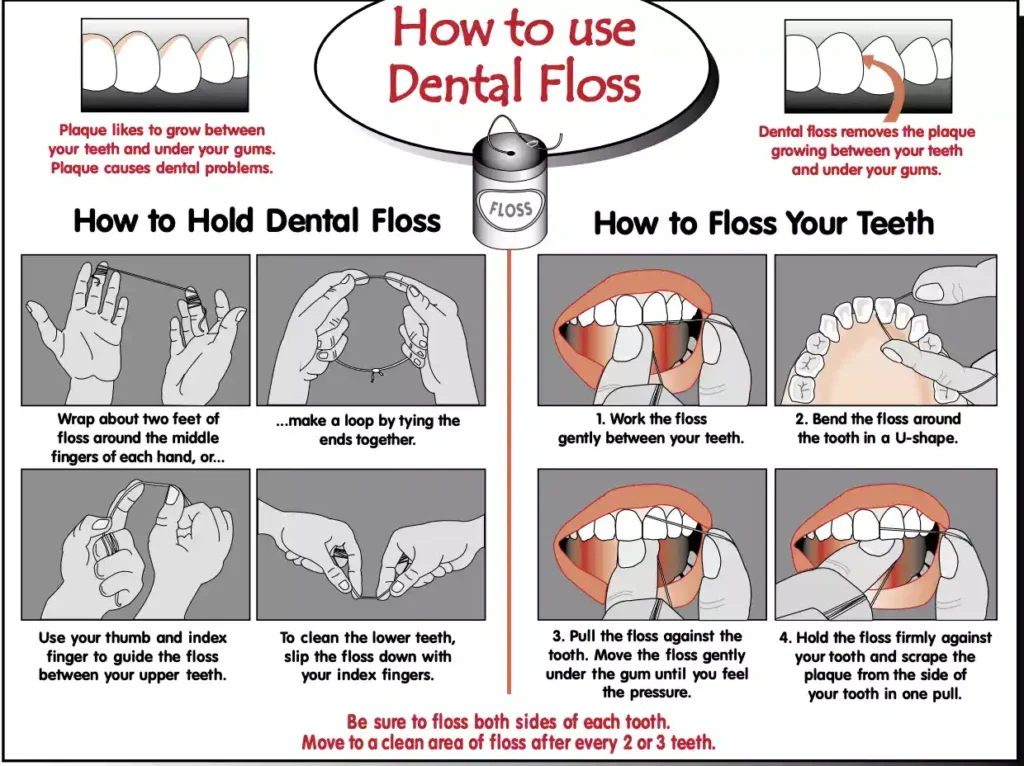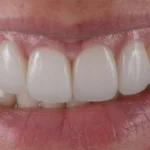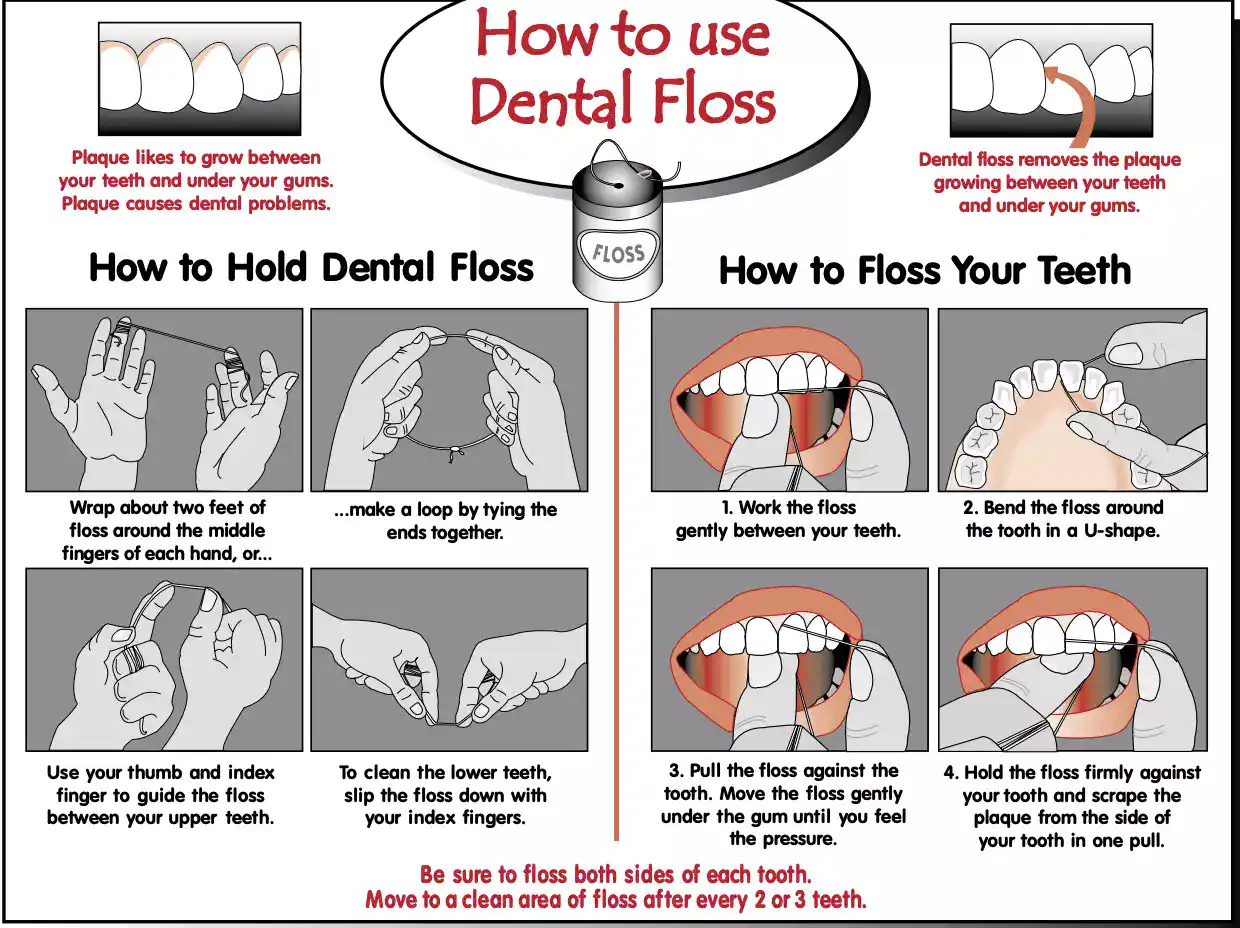How to Floss Properly

#1How to Floss Properly?
Flossing is an essential part of maintaining good oral hygiene and preventing dental problems like gum disease and cavities. Here’s a step-by-step guide on how to floss properly:
- Gather Your Supplies:
- You will need dental floss. You can choose between traditional string floss, floss picks, or dental tape. Use whatever works best for you.
- Prepare the Floss:
- Break off about 18-24 inches of dental floss. This gives you enough length to use clean sections of floss between each tooth.
- Wash Your Hands:
- Always start with clean hands to prevent transferring bacteria into your mouth.
- Wrap the Floss:
- Hold the floss between your thumb and index fingers.
- Leave a couple of inches of floss to work with.
- Gently wrap the floss around your middle fingers, leaving a gap of about 1-2 inches between them to create tension.
- Position the Floss:
- Slide the floss gently between your teeth using a gentle sawing motion.
- Be careful not to snap or force the floss into your gums, as this can cause injury or bleeding.
- When the floss reaches the gumline, curve it into a C-shape around one tooth.
- Clean Each Side:
- Gently glide the floss up and down the side of the tooth, making sure to go slightly below the gumline.
- Use a clean section of floss for each tooth to avoid transferring bacteria.
- Unwind the Floss:
- After cleaning one tooth, unwind a bit of clean floss from your fingers and advance to the next tooth.
- Repeat the process for all teeth, including the back molars.
- Rinse and Dispose:
- After flossing, rinse your mouth with water or mouthwash to remove any dislodged debris.
- Dispose of the used floss in the trash.
- Finish with Mouthwash:
- Using an antimicrobial mouthwash can help kill any remaining bacteria and leave your mouth feeling fresh.
- Be Gentle:
- Be gentle while flossing to avoid damaging your gums. If you experience bleeding or discomfort, it’s a sign that you need to floss more regularly, not less.
- Floss Daily:
- Ideally, you should floss at least once a day, preferably before brushing your teeth.
- Visit Your Dentist:
- Regular dental check-ups are crucial for maintaining good oral health. Your dentist can provide guidance on your flossing technique and detect any potential issues early.
Remember, proper flossing is an essential part of your daily oral hygiene routine, along with brushing and regular dental check-ups. By flossing correctly and consistently, you can help keep your teeth and gums healthy.





